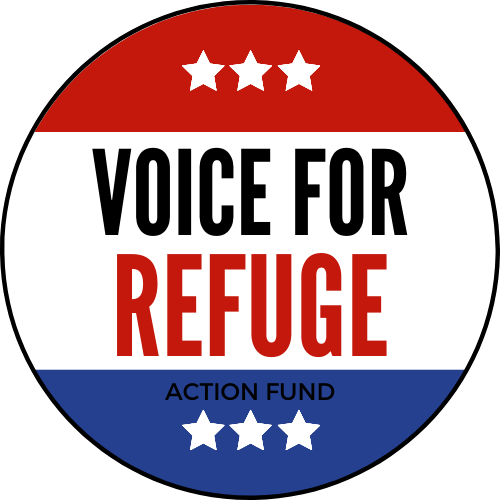Refugees don’t want to leave their homes–they are running for their lives.
Refugees are people who have been forced to flee their home country to escape persecution because of their ethnicity, nationality, religion, political opinion, or social group. They leave home to save their lives and to seek safety for their families. Resettlement is the last resort for the most vulnerable refugees who can’t return to their home country or safely rebuild their lives nearby–less than 1% of the world’s refugees will ever be resettled to a third country. Some have ignorantly claimed that refugees somehow cheat the system. The reality is that being approved for resettlement in the United States is extremely difficult, takes months and even years, and requires more extensive vetting than any other visa process. Additionally, refugees can’t choose which country they’re resettled to (the U.S. is one of 27 resettlement countries).
Refugees are extensively vetted before they arrive in the United States.
The vetting process for refugees involves extensive security checks against multiple databases by multiple U.S. government agencies, and even in-person interviews with Department of Homeland Security officials. Refugees also must complete health screenings to be approved for travel. This can all take 2-3 years or even longer. Despite this, some have still claimed, against all evidence, that the process is somehow not tough enough and that we can’t know if refugees’ claims are valid. This is an attempt to misguide the American people who aren’t familiar with the exhaustive vetting process. Refugees are the most vetted people to travel to the United States, and any refugee application with missing information or that raises questions is simply denied.
Refugees boost the American economy.
Refugees participate in the labor force at a higher rate than the general public and bring important skills to fill labor shortages. Many refugees have professional backgrounds – they were forced to leave their homes because of persecution, not poverty. Even refugees who come from difficult economic conditions don’t remain stagnant – they are resilient and seize the opportunity to rebuild their lives in the United States, learning new skills and working hard. Some, however, ignore the big picture and focus on the cost of services provided to refugees while they get back on their feet. This view is misguided, as it fails to see these services as a small, initial investment that pays great economic dividends.
Refugees pay taxes, contributing far more over time than they receive in initial benefits.
According to a Department of Health and Human Services report, refugees paid a massive $63 billion dollars into the U.S. tax system in the previous ten years alone. The National Bureau of Economic Research affirms that refugees become self-sufficient quickly and that contribute a sizable $21,000 more in taxes than they receive in benefits within 20 years of arriving in the United States. Despite this, some have still insisted that refugees are somehow a drain on the system. Any claims like this, however, are completely false: refugees contribute a massive amount to the tax system.
Refugees create jobs.
Refugees have a higher rate of entrepreneurship (13%) than U.S. born individuals (9%), showing that refugees infuse their communities with new ideas and opportunities for growth (and thus jobs for other Americans). Some make claims that refugees somehow take jobs away from “real” Americans, but the actual facts of the situation are clear: refugees don’t take jobs away from anyone – in fact, they actively help to create them.
Americans across the political spectrum support refugee resettlement and welcome refugees into their communities.
Thousands of volunteers welcome refugees across the country, and a majority of Americans oppose laws that keep refugees out. The U.S. Refugee Admissions Program was created in 1980 with strong bipartisan support that continues to this day, as demonstrated by bipartisan resolutions, letters, and the bipartisan Congressional Refugee Caucus. In response to a now-enjoined executive order allowing states and localities to ban refugees, 43 governors and more than 100 local officials affirmed their support for refugee resettlement.
The Trump administration has arbitrarily cut refugee admissions to historic lows for political gain.
Since 1980, both Republican and Democrat administrations have set an average refugee admissions goal of 95,000. While many cite that the United States resettles the most refugees numerically, the number resettled in proportion to our population is far fewer than other countries. Recently, the Trump administration has slashed refugee admissions by more than 80%, to an all-time low of just 18,000. This has stripped hope from separated refugee families who were expecting loved ones to arrive. Especially given the massive, tangible contributions of refugees, this is incredibly misguided: the United States should be letting in more refugees, not fewer.

